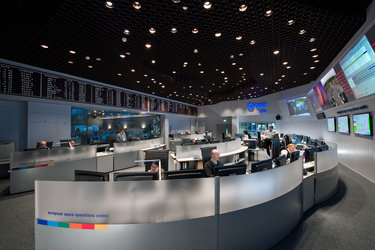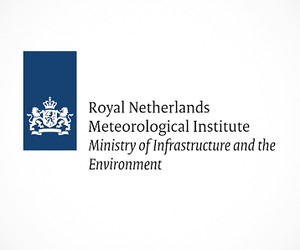Ready to reap the benefits from Copernicus Sentinel-5P
Now that Sentinel-5P is safely in orbit, engineers have started commissioning the satellite for the task of delivering extremely high-quality information on air quality. Meanwhile, the Copernicus Atmosphere Monitoring Service is poised to ensure we all reap the benefits from this latest mission.
Launched from Russia on 13 October 2017, this Copernicus satellite is in excellent health and is being manoeuvred gently into its operational orbit.
As planned, the satellite’s Tropomi instrument is in the process of being decontaminated. This will take another couple of weeks and then it will be carefully fine-tuned for service.
Sentinel-5P was designed to provide a primary source of data for the Copernicus Atmosphere Monitoring Service (CAMS), which is at the European Centre for Medium-Range Weather Forecasts (ECMWF) in the UK, and it is their job to ensure that the mission ultimately benefits Europe’s citizens.

Philippe Brunet, EC Director of Space Policy, Copernicus and Defence, said, “The EC is strongly committed to monitoring global air quality. Sentinel-5P will provide loads of information about the air we breathe, which means that Europe will be better equipped to address the challenges affecting citizens in their daily lives.
“And, as with all data provided by the Copernicus Programme, data from Sentinel-5P are free and open to anyone in the world, so the benefits are expected to extend way beyond Europe Union’s borders.”
With new software written that allows Sentinel-5P’s stream of data to fit into their current forecasting system, CAMS is ready to test and compare these new observations with forecast models. This is essential to make sure that the new data are not biased or flawed. Importantly, their findings will also contribute to the overall effort to validate the mission.
Assuming this all goes well, Sentinel-5P, which offers data with better accuracy and at higher resolution than ever before, will underpin the ‘products’ CAMS produces when the mission goes into service.


Access the video
Since Sentinel-5P delivers information on aerosols and harmful gases such as nitrogen dioxide, sulphur dioxide and carbon monoxide, CAMS’ products include those that feed into daily European air-quality forecasts.
There are also a number of downstream users that range from national environmental agencies to small- and medium-sized enterprises that develop innovative applications related to air quality and renewable energy.
CAMS also contributes to explaining particular events such as the recent dust plume of Saharan dust and ashes from fires in Portugal and Spain that was carried to France and UK by Storm Ophelia, which led to yellow skies.
Deputy Head of CAMS, Richard Engelen, said, “The observations we will get from Sentinel-5P are pivotal for CAMS operations at ECMWF. The mission will provide vast amounts of high-quality data for our global forecasts of atmospheric composition.
“Sentinel-5P ensures we will have observations for years to come and that users get a continuous and reliable service.”
Vincent-Henri Peuch, Head of CAMS, added “While anyone can access the data, they are complex and have to be processed – CAMS does the job for you! It’s similar to weather forecasts; you don’t need to be a meteorologist to benefit from complex numerical models.

“Through the CAMS service chain, high-quality information about air quality, pollen allergies, UV or solar renewable energy is made available through websites, smartphone apps and other communication channels so that everyone can reap the benefits of this wonderful new satellite mission.”
Josef Aschbacher, ESA’s Director of Earth Observation Programmes, noted, “With six Sentinel satellites in orbit observing our environment, the Copernicus programme is living up to its ‘Europe’s eyes on Earth’ claim.
“We have been getting exceptional data about our land, oceans and ice from the Sentinel-1, Sentinel-2 and Sentinel-3 missions. And soon, Sentinel-5P, once in operation, will shed new light on the atmosphere giving us detailed information about something that affects us all – the quality of the air we breathe.”
About the Sentinels
The Sentinels are a fleet of dedicated EU-owned satellites, designed to deliver the wealth of data and imagery that are central to Europe’s Copernicus environmental programme. In partnership with EU Member States, the European Commission leads and coordinates this programme, to improve the management of the environment, safeguarding lives every day. ESA is in charge of the space component, responsible for developing the family of Copernicus Sentinel satellites and ensuring the flow of data for the Copernicus services, while the operations of the Sentinels have been entrusted to ESA and Eumetsat.














